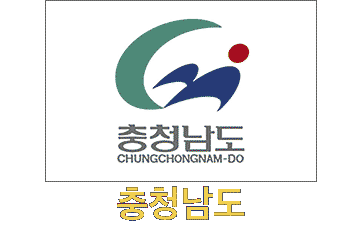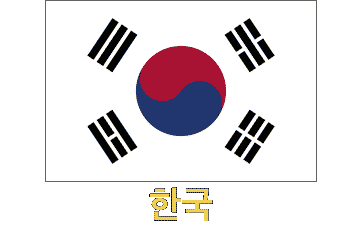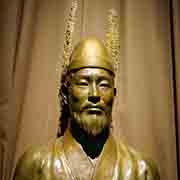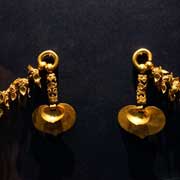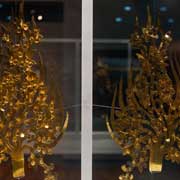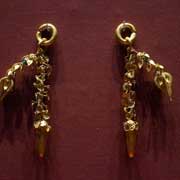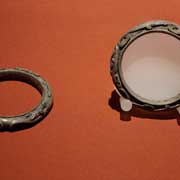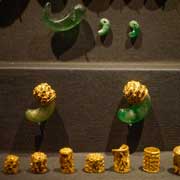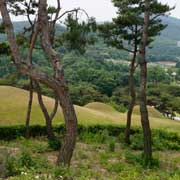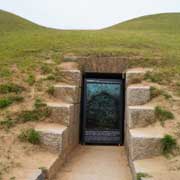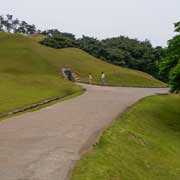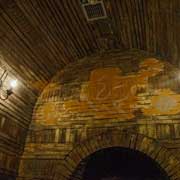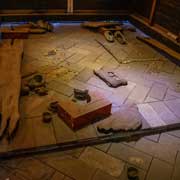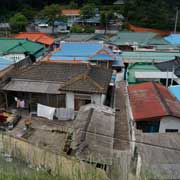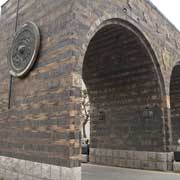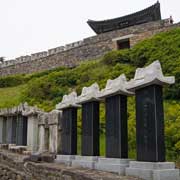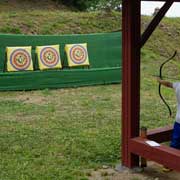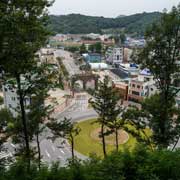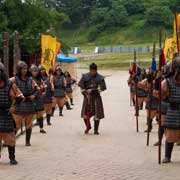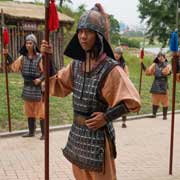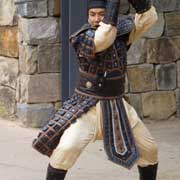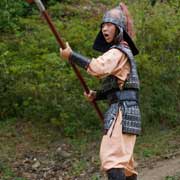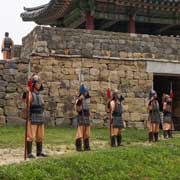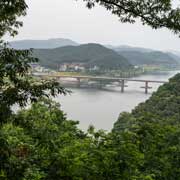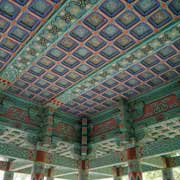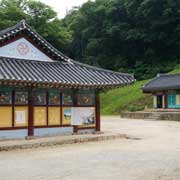Photos of Gongju, South Chungcheong Province, Korea
Gongju, South Chungcheong Province
The city of Gongju, in Chungcheongnam-do (South Chungcheong Province), the centre-west of South Korea, was the site of the capital of the Baekje Kingdom from 475 to 538 CE when it was called Ungjin. The kingdom of Baekje was founded in 18 BCE, but its capital was moved here from its former capital, Hanseong (modern-day Seoul) when it was overrun by forces of the rival Kingdom of Goguryeo. In 538 CE, the capital was moved again, to nearby Buyeo.
you may then send it as a postcard if you wish.
There are Royal Tombs here from that era; among them the tomb of King Muryeong, who reigned from 501 until he died in 523. Rich golden jewellery was found here; the tomb itself is not open to the public, but a replica has been built and laid out exactly as it was found. The original golden earrings, diadems, bracelets and other golden and jade ornaments of King Muryeong and his queen-consort are displayed in the Gongju National Museum. Another tomb, the Songsanni Tomb No. 5 with a well preserved vaulted ceiling, has also been reconstructed as a replica to show what it looked like, 1500 years ago.
Overlooking Gongju is the Gongsanseong Fortress, serving the Baekje Kingdom’s royal palace for the sixty-four years of the Ungjin Period; the fortress was called Ungjinseong in those days. Archaeological excavations from 1980 have revealed the construction of the fortress ramparts, royal palace site, and ancillary structures. The large Imnyugak Pavillion or banquet hall has been reconstructed based on patterns found in Muryeong’s tomb. In Baekje period costumes, a re-enactment of the Changing of the Guards Ceremony is performed during weekends in the summer months.
